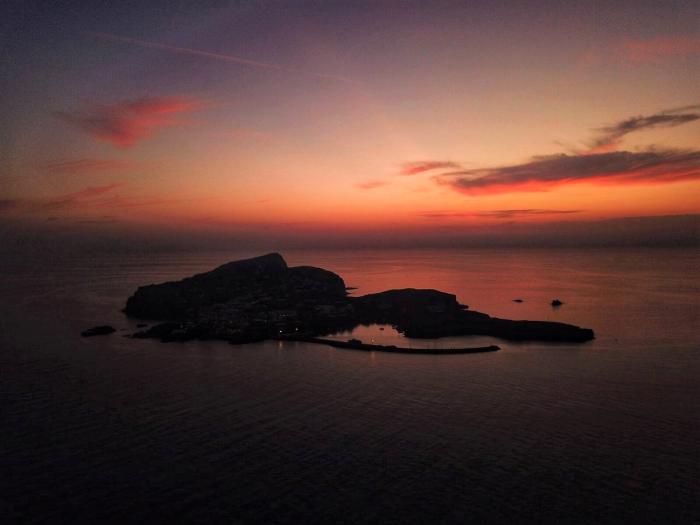
Island facts
Nearly equidistant from Ponza (to the west), Formia (to the north) and Ischia (to the east), a small rock with a basaltic base and tuffaceous structure represents what remains of an enormous submerged volcano 20 km in diameter and 800 metres high that 4 million years ago triggered the genesis of the Pontine archipelago. Today, all that remains of that volcano, destroyed by the same eruptions that generated Ponza, Palmarola, Zannone and S. Stefano, is less than 2 km of emerged land that continues to struggle against natural landslides, winds and waves from the high seas. This small rock at the mercy of natural forces is now called Ventotene and was first colonised about two thousand years ago by the Romans, who were immediately fascinated by the fertility of the volcanic land, allowing them an easy livelihood; this is why they nicknamed it Pandataria ('the island that distributes everything') and why the island is still famous today more for its legumes than for its fish market. Ventotene is the furthest from the coast among the five Pontine islands, the most isolated of the islands on this stretch of the Tyrrhenian coast (even when looking at the neighbouring islands of the Campania archipelago); this primacy, however, was perhaps what led it to become known as the island of confinement.
How does Ventotene produce electricity?
Ventotene is one of the Mediterranean islands that is not connected to the national grid and must generate the energy it needs locally. Like all other minor islands, Ventotene is still far from generating all the electricity it needs through renewable sources (to date, only 5% of total electricity generation comes from public and private photovoltaic plants, which will be described in the C.E.T.A.) and therefore needs its power plant. The Ventotene power plant was recently upgraded to improve the performance of diesel generators by installing electrical storage. This integration aims to increase the average generation efficiency, which, as on all islands, is notoriously far below the national average due to the strong seasonal variability of the load.
Ventotene’s path to transition
Through a series of public meetings, the transition path of the island of Ventotene was identified as:
Participatory: The involvement of the resident population and island lovers must be the backbone of the transition mechanism. Only a classic ecological conversion from outdated to cleaner technologies will be possible without this.
Respectful of the environment in which it operates: Ventotene is a Protected Marine Area and State Nature Reserve. The transition to renewable electricity generation must always consider the principle of minimal damage to the dynamics of the living beings that this environment hosts.
- Authentic and tied to its historical roots: the small and fragile island of Ventotene must not aim to become the most advanced technological centre in the Mediterranean where hundreds of remote-controlled electric vehicles whizz by on carbon rails. Instead, it must rediscover the importance of walking or moving by light and shared means; it must return to making agriculture the centre of its economic activities, making it more natural and integrated with the surrounding environment; and it must aim to deseasonalise its offer by encouraging sustainable, resilient tourism interested in the history that this island brings with it.
